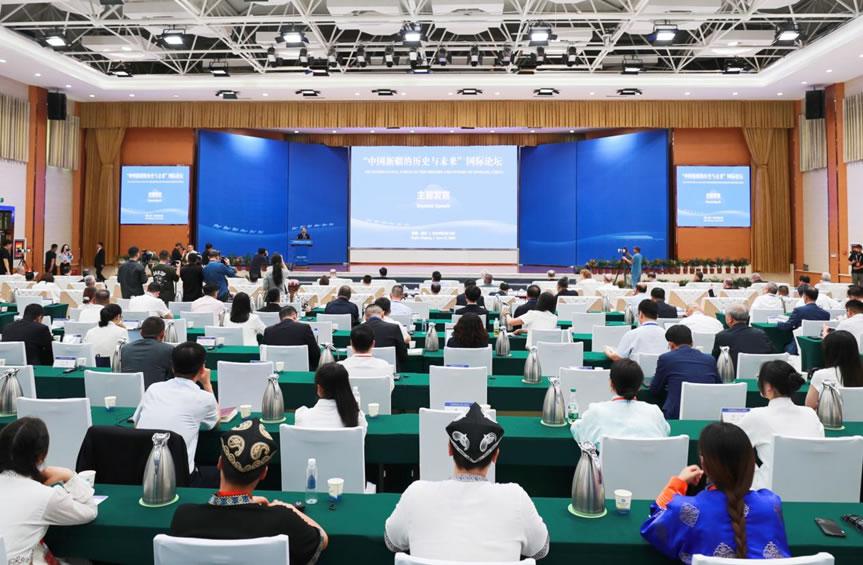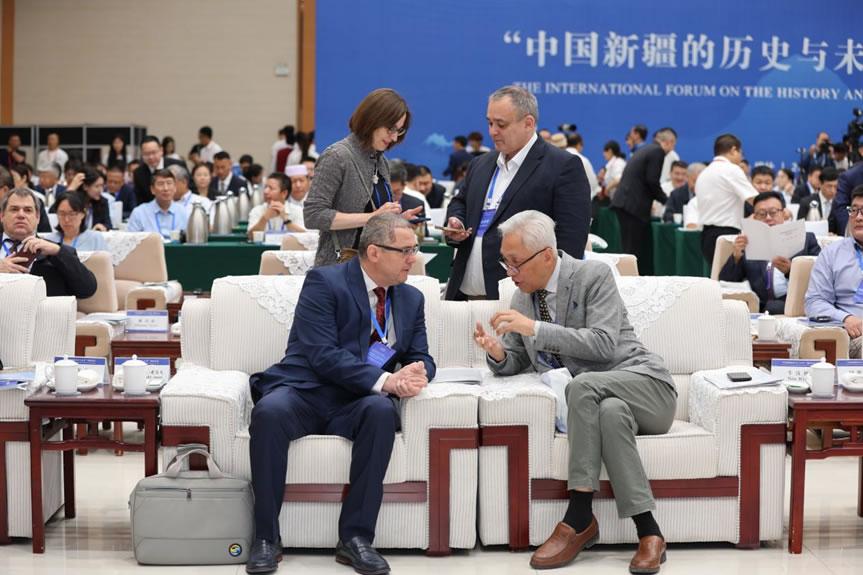Dialogue on the history and future of Xinjiang, China

In order to find out the truth about the indigenous residents of the Tarim Basin, we must view from the perspective of physical anthropology to reanalyze various historical data.
Through analysis, it can be observed that the original inhabitants of the Tarim Basin included groups with prominent nose and deep-set eyes who spoke Indo-European languages (the"Hu"people), as well as Han Chinese and Qiang people with Mongoloid features. The Huihe people (the main ancestors of today's Uyghurs) from the Mongolian steppes, who belong to the North Asian Mongoloid, entered the Tarim Basin in AD 840. Through integration with the original inhabitants of the oases in the basin, they formed the modern Uyghur ethnic group. Therefore, the Tarim Basin has been home to multiple ethnic groups since ancient times, including the Han Chinese.
——By Yang Shengmin,
Senior Professor at the Minzu University of China,
a Member of the Social Sciences Committee under the Ministry of Education, PRC
Since the beginning of life, the Early Man was searching the communications with his counterparts for mutual benefits, so the Silk Road was emerged to be one of the greatest famous commercial road that linked the Far East (China), "which was known as the beginning of the road ", with the Far West (East Europe) through the portal of Egypt which considered "the Ending station 'point' of the Silk Road. "
Despite the very long distances between China and Egypt, there are many of the common civilizational features between the two countries.
——By Mohsen Mohamed Negm-eldin,
Dean and Professor of Faculty of Archeology at Cairo University,
Visiting Professor at Shandong University, Visiting Professor at Nanjing University
The work done in the last 40 years has produced a wealth of data. We are now at a crucial period. The implementation of the Medium-and Long-Term Plan for the Archaeology of China's Cave Temples by the State Administration of Cultural Heritage has stressed the importance of excavation and enforced the compiling of archaeological reports. This will not only be beneficial to the study of Chinese caves but, especially in the case of Xinjiang, to international collaboration for the study of caves in Central Asia and India.
——By Vignato Giuseppe,
Professor of the School of Archaeology and Museology,
Peking University
By analyzing the overall development and changes of Xinjiang population and the demographic structures of Han and ethnic groups of Uygur, and Kazakh, it is evident that through rapid social and economic development and poverty alleviation campaign, all Xinjiang ethnic groups have entered a moderately prosperous society at the same time, and developed together in various fields.
——By Ma Rong,
Peking University Boya Chair Professor

Huihu People (Uighur) passionately studied Confucianism, Taoism and Manichaeism. Fragments of calligraphy practicing manuscript inscribed with Chinese characters, found by archaeologist, prove that Huihu People were active learners of Chinese characters and Han culture.
The contents of the unearthed Huihu manuscripts also demonstrate that Huihu People's initiative in respecting traditional Chinese culture as well as their belief in Confucianism and Taoism. In literature and art, many Huihu writings cited and translated the Han literatures. Huihu murals in Turpan and Beiting also were saturated with influence of the Central Plains culture.
——By Niu Ruji,
Professor of Xinjiang Normal University
For centuries, Central Asia and China have been important hubs for trade, economic, cultural and intellectual exchanges between Asia and Europe, major nodes of the Silk Road, with a rich and unique historical heritage, and Xinjiang is a unique bridge of history and civilization that occupies an important place in their relationship.
——By Mirzokhid Rakhimov,
Head of the Department of Contemporary History and International Studies at the Institute of History,
Uzhekistan Academy of Sciences,
Professor at the University of World Economy and Diplomacy
Kashi was formerly the city where the northern and southern Silk Roads met.This Silk Road saw highly significant cultural interchange across the great Eurasian Continent.With the development of the "Belt and Road Initiative " (BRI) by President Xi Jinping, beginning in 2013, Xinjiang and Kashi are again becoming centers for spreading infrastructure, culture, and economic development. Through the "Belt and Road Initiative" and growth, modernization, and relative stability, Xinjiang is experiencing another moment of great prosperity.
——By Colin Mackerras,
Honorary Professor at Griffith University, Australia,
and a Fellow of the Australian Academy of the Humanities
China's governance policies of Xinjiang has witnessed remarkable success. Firstly, the Chinese government fight against separatism and its followers resolutely; Secondly, the government passionately leads all Xinjiang ethnic groups to common progress with enormous inputs of human, material and financial resources; Thirdly, established sound ethnic theories and found right policy directions through continuous practice and research, which can be summarized as "Forging Strong Sense of Community for the Chinese Nation".
——By Pan Wei,
Chair Professor at the Faculty of Social Sciences
and the Director of the Institute of Global and Public Affairs at the University of Macau
The views of these comments don't necessarily reflect those of DeepChina.
